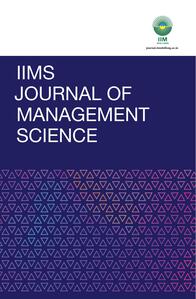
1 IBMR, IPS Academy, Indore, Madhya Pradesh, India
Creative Commons Non Commercial CC BY-NC: This article is distributed under the terms of the Creative Commons Attribution-NonCommercial 4.0 License (http://www.creativecommons.org/licenses/by-nc/4.0/) which permits non-Commercial use, reproduction and distribution of the work without further permission provided the original work is attributed.
Pandemics bring changes all over the world. These changes not only impact at a personal level but also at a professional level. All businesses and organizations are facing challenges of its own due to the enforced COVID-19 lockdown; so is the education sector as well. As we know that “education is key to success,” the sector designed its path during this pandemic. Online learning has become a significant tool to some extent to overcome the problem of education created during the pandemic. Every education institute, right from schools to colleges, adopted online learning. But this online learning is a very new concept in India at every level of education. This article tries to identify the effectiveness of online learning. It tries to identify whether online learning succeeds in achieving the goal of learning and mentoring of students or not. This article tries to identify whether the objective of knowledge enrichment was fulfilled with the online learning or was it just a betrayal. The article also tries to identify the factors which are very much responsible for the effectiveness of online learning. Primary data from 147 management undergraduate and postgraduate students has been used to answer all these questions. Data were analyzed with the help of Smart PLS and SPSS software. With the help of factor analysis, a total of six factors were identified which play a significant role in the effectiveness of online learning. The overall impact of all the factors on the “effectiveness of online teaching” was obtained with the help of structural equation modeling and regression analysis.
Education, effectiveness, online learning, pandemic, COVID-19
Anderson, T. (Ed.). (2011). Teaching in an online learning context. In The theory and practice of online learning (2nd ed., pp. 343–366). Athabasca University Press.
Basilaia, G., Dgebuadze, M., Kantaria, M., & Chokhonelidze, G. (2020). Replacing the classic learning form at universities as an immediate response to the COVID-19 virus infection in Georgia. International Journal for Research in Applied Science & Engineering Technology, 8(3), 101–108.
Bates, A. W., & Poole, G. (2003). Effective teaching with technology in higher education. Jossey-Bass Inc.
Khan, B. H. (2005). Managing e-learning: Design, delivery, implementation, and evaluation (pp. 22–33). Information Science Publishing.
Kim, K. J., & Bonk, C. J. (2006). The future of online teaching and learning in higher education: The survey says. Educause Quarterly, 29, 22–30.
Kira, D., & Saade, R. G. (2006). Factors affecting online learning. In IADIS International Conference on Cognition and Exploratory Learning in Digital Age (CELDA 2006) (pp. 277–282). IADIS.
Li, C., & Lalani, F. (2020, April 29). The COVID-19 pandemic has changed education forever. This is how. World Economic Forum. https://www.weforum.org/agenda/2020/04/coronavirus-education-global-covid19-online-digital-learning/
Littlefield, J. (2018). The difference between synchronous and asynchronous distance learning. https://www.thoughtco.com/synchronous-distance-learning-asynchronous-distance-learning-1097959
McBrien, J. L., Cheng, R., & Jones, P. (2009). Virtual spaces: Employing a synchronous online classroom to facilitate student engagement in online learning. The International Review of Research in Open and Distributed Learning, 10(3), 1–17.
Mtebe, J. S., & Raisamo, R. (2014). Investigating students’ behavioral intention to adopt and use mobile learning in higher education in East Africa. The International Journal of Education and Development Using Information and Communication Technology, 10(3), 4–20.
Munguatosha, G. M., Muyinda, P., & Jude, L. (2011). A social networked learning adoption model for higher education institutions in developing countries. On the Horizon, 19(4), 307–320.
Njenga, J. K. (2011). E-learning adoption in Eastern and Southern African higher education institutions (A thesis submitted in fulfillment of the requirements for the degree of Doctor of Philosophy in the Department of Information Systems, University of the Western Cape, pp. 1- 269). https://core.ac.uk/download/pdf/58913753.pdf
Njenga, J., & Fourie, L. (2008). The myths about e-learning in higher education. British Journal of Educational Technology, 41(2), 199–212.
Nunes, M. B., & McPherson, M. (2007). Why designers cannot be agnostic about pedagogy: The influence of constructivist thinking in design of e-Learning for HE. Studies in Computational Intelligence, 62, 7–30.
Rogers, E. M. (2003). Diffusion of innovations (5th ed.). Free Press.
Singh, V., & Thurman, A. (2019). How many ways can we define online learning? A systematic literature review of definitions of online learning (1988–2018). American Journal of Distance Education, 33(4), 289–306.
Tarus, J. K., & Gichoya, D. (2015). E-Learning in Kenyan universities: Preconditions for successful implementation. The Electronic Journal of Information Systems in Developing Countries, 66, 1–14.
Volery, T., & Lord, D. (2000). Critical success factors in online education. International Journal of Educational Management, 14(5), 216–223.